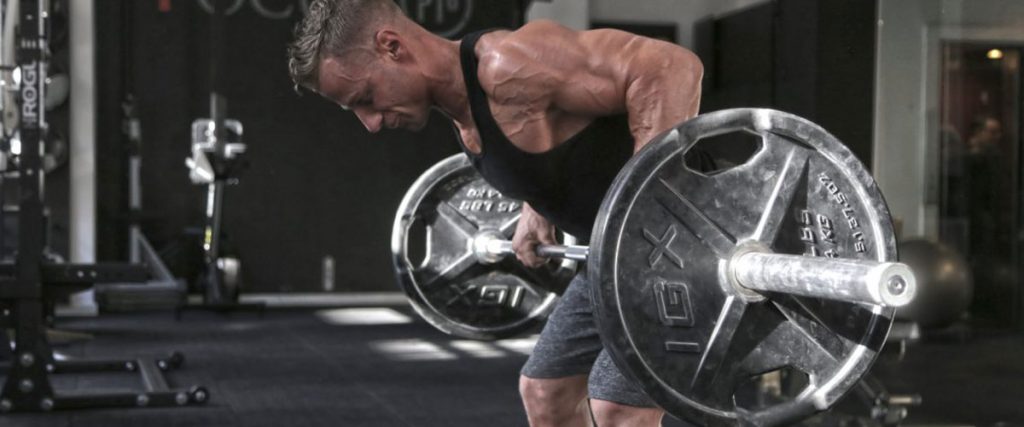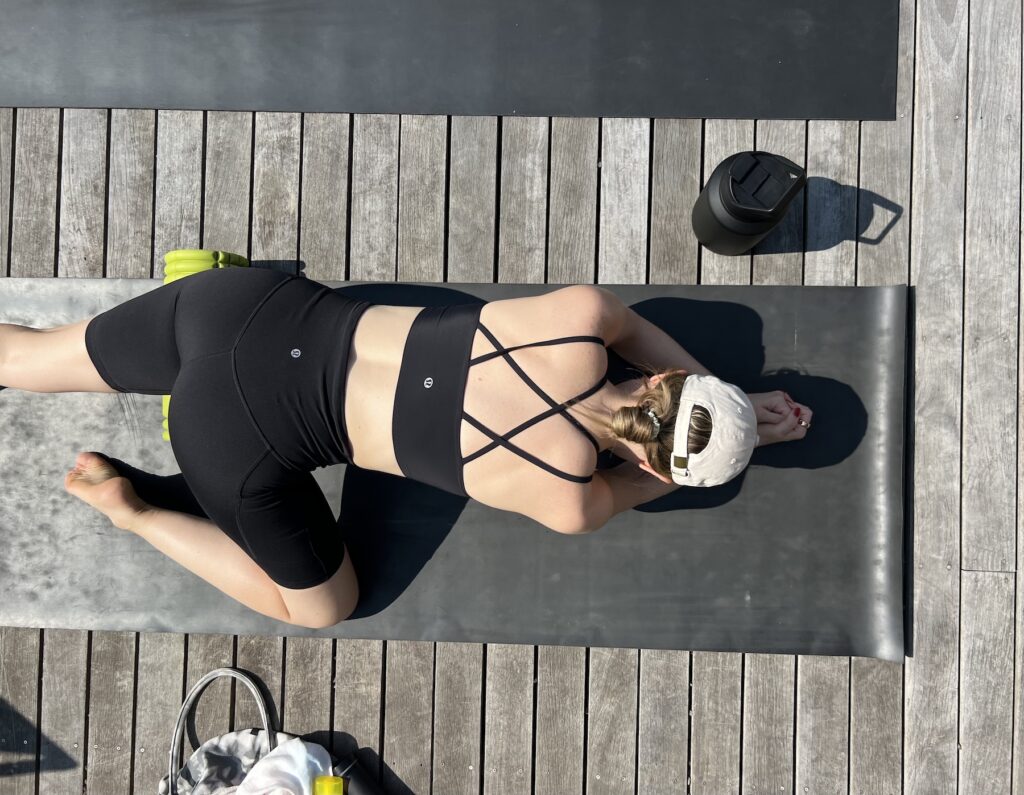Get ready to conquer your first day back at the gym workout with a new level of determination and confidence. After letting your fitness routine slip, stepping back into the world of workouts can be overwhelming. However, with the right mindset and some strategic planning, you can get back at it and crush your fitness goals.
In this piece, we will guide you through the process of conquering your first day back to the gym workout. From motivational tips to practical advice, we have got you covered. Whether you are a seasoned gym-goer or a beginner, we will help you navigate the challenges and make the most out of your workout session.
Prepare to be inspired as we share techniques to boost your motivation, set realistic goals, and create an effective workout plan. It’s time to take charge, unleash your inner powerhouse, and make your first day back at the gym a success.
Related: 35+ free workout plans for different goals and ability levels
The importance of easing back into a gym workout
After a break from your fitness routine, it’s important to ease back into a gym workout gradually. Jumping right back into an intense regimen can lead to injury, burnout, and discouragement. The key is to start slow and build up your strength, endurance, and flexibility over time. This approach not only helps prevent physical setbacks but also allows your mind to adjust to the renewed commitment.
When you’ve been away from the gym for an extended period, your body has had the chance to rest and recover, but it has also lost some of its conditioning. Easing back into your workout routine gives your muscles, joints, and cardiovascular system the time they need to adapt to the increased physical demands. This gradual transition helps you avoid the dreaded post-workout soreness that can make even the simplest movements painful.
Taking it slow on your first day back also allows you to focus on proper form and technique. Executing exercises correctly is step one to maximizing the benefits and minimizing the risk of injury. By starting with lighter weights or reduced intensity, you can relearn the proper movements and build a solid foundation before gradually increasing the challenge.
Related: The 20 best exercises for getting back into the gym
Setting realistic goals for your first day back

As you prepare to conquer your first day back at the gym, it’s essential to set realistic goals that align with your current fitness level and long-term aspirations. Overly ambitious targets can lead to frustration and discouragement, while setting the bar too low may not provide the motivation you need to push yourself.
Begin by assessing your pre-break fitness level and the progress you had made before your hiatus. This information will help you determine a suitable starting point for your return to the gym. Consider factors such as the weight you were lifting, the distance you could run, or the number of reps you could complete for specific exercises.
Next, establish specific, measurable, and time-bound goals for your first day back. These could include completing a certain number of sets and reps, maintaining proper form throughout your workout, or simply finishing the entire session without having to take extended breaks. Remember to keep these goals realistic and achievable, as even small victories can provide the boost of confidence you need to keep moving forward.
It’s also important to set long-term goals that will keep you motivated and focused on your overall fitness journey. These might include improving your cardiovascular endurance, building muscle strength, or reaching a specific weight or body composition target. By having a clear vision of where you want to be, you can create a roadmap to guide your efforts and celebrate your progress along the way.
Preparing mentally and physically for your first gym session
Conquering your first day back at the gym requires both mental and physical preparation.
Mentally, it’s crucial to cultivate a positive and determined mindset. Remind yourself of the reasons why you’re returning to the gym, whether it’s to improve your health, boost your energy levels, or simply reclaim a sense of accomplishment. Visualize yourself successfully completing your workout and feeling the pride and satisfaction that comes with it. This mental rehearsal can help you overcome any feelings of apprehension or self-doubt that may arise.
Physically, take the time to prepare your body for the upcoming workout. Start by engaging in some light cardio, such as a brisk walk or a gentle jog, to warm up your muscles and get your heart rate elevated. This warm-up routine helps increase blood flow, lubricate your joints, and reduce the risk of injury.
Next, spend a few minutes performing dynamic stretches that target the major muscle groups you’ll be using during your workout. These movements, such as arm circles, leg swings, and torso twists, help improve flexibility and range of motion, allowing you to execute exercises with greater ease and efficiency.
Finally, ensure that you’re properly hydrated and fueled for your workout. Drink water before, during, and after your session to keep your body well-hydrated and functioning at its best. Consider having a small, nutrient-dense snack, such as a protein shake or Greek yogurt, to provide your muscles with the energy they need to power through your routine.
Choosing the right exercises for your first day back
When it comes to your first day back at the gym, the exercises you choose can make all the difference in the success of your workout. The key is to select a well-rounded routine that targets multiple muscle groups while accounting for your current fitness level and any limitations you may have. When you’re just getting started again, we suggest going with a 3 day full body split, every other day.
Begin by focusing on compound exercises that engage multiple muscle groups simultaneously. These movements, such as squats, deadlifts, and pull-ups, not only build overall strength but also help you make the most of your limited time in the gym. Incorporate these compound exercises as the foundation of your workout, and then add in targeted isolation exercises to address any specific areas you want to focus on.
It’s also important to consider the intensity and duration of your exercises. Since you’re just getting back into the swing of things, opt for lighter weights and higher reps to allow your body to adapt to the increased physical demands. Gradually increase the intensity and challenge over the course of your subsequent workouts, but be mindful not to overdo it on your first day back.
Additionally, don’t forget to include exercises that address your cardiovascular fitness. A brief burst of high-intensity interval training (HIIT) or a moderate-paced jog on the treadmill can help get your heart rate up and improve your overall endurance, but we like dedicated days for HIIT. Remember to listen to your body and adjust the intensity and duration of these cardio exercises as needed.
Suggested program for your first day back: The Introduction or Transition Workout plan
Tips for proper form and technique during your workout
Proper form and technique are crucial when it comes to your first day back at the gym. Executing exercises correctly not only helps you maximize the benefits but also reduces the risk of injury, which can derail your fitness journey before it even begins.
Start by focusing on your posture and body alignment. Pay close attention to the range of motion for each exercise. Avoid cutting your reps short or using momentum to complete the movement. Instead, focus on controlling the weight throughout the entire range of motion, ensuring that your muscles are working to their full potential.
Breathe properly during your exercises. Exhale on the exertion (such as the lifting or pushing phase) and inhale on the easier (lowering or returning) phase. Proper breathing not only helps you maintain control but also supports your muscle contractions and cardiovascular function.
Remember, it’s better to start with lighter weights and focus on perfect form rather than trying to lift heavy too soon. This approach will help you build a solid foundation and prevent injuries that could sideline you for weeks or even months.
Related: 20 exercise how-tos for good form
Strategies for managing post-workout soreness

It’s natural to experience some degree of post-workout soreness, especially after your first day back at the gym. This soreness, often referred to as delayed onset muscle soreness (DOMS), is a normal physiological response to the micro-tears and inflammation in your muscles caused by the increased physical activity.
While a certain level of soreness is to be expected, there are several strategies you can employ to manage and minimize its impact on your recovery and subsequent workouts.
First and foremost, stay hydrated. Drinking plenty of water before, during, and after your workout can help flush out the lactic acid and other byproducts that contribute to muscle soreness. Aim to consume at least 8 to 10 glasses of water per day, and consider adding electrolyte-rich beverages to your routine as well.
Incorporate light active recovery activities, such as gentle stretching, walking, or low-impact cardio, into your post-workout routine. These activities help increase blood flow to the affected muscles, promoting the delivery of nutrients and the removal of waste products, which can alleviate discomfort.
Consider using a foam roller or other self-myofascial release tools to target specific areas of soreness. Gently rolling out the muscles can help break up adhesions, improve flexibility, and reduce the intensity of the discomfort.
If the soreness is particularly intense, you can also apply a cold compress or take a cool (not cold) shower to help reduce inflammation and numb the pain. Avoid hot showers or baths, as they can increase blood flow and exacerbate the discomfort.
Finally, be patient and allow your body the time it needs to recover. Resist the temptation to push through the soreness and instead focus on resting, refueling, and allowing your muscles to heal. With proper care and management, the post-workout soreness should subside within a few days, paving the way for your next successful gym session.
Incorporating rest and recovery into your workout plan
Effective workout routines not only include the physical training but also prioritize rest and recovery. This balance is especially important when you’re just getting back into the gym, as your body needs time to adapt to the increased demands.
Start by building in at least one or two rest days per week, where you avoid any strenuous physical activity. During these rest days, focus on light stretching, gentle mobility exercises, and active recovery activities like walking or swimming. This downtime allows your muscles to repair and rebuild, reducing the risk of injury and burnout.
In addition to your scheduled rest days, pay attention to the signs of fatigue and overtraining, such as persistent muscle soreness, decreased performance, and difficulty sleeping. If you notice these indicators, don’t hesitate to take an extra day or two off to allow your body to fully recover.
Proper sleep is another crucial component of your recovery plan. Aim for 7 to 9 hours of quality sleep each night, as this is when your body undergoes the essential processes of muscle repair and growth. Establish a consistent sleep routine, create a relaxing pre-bed environment, and consider incorporating relaxation techniques like meditation or deep breathing to improve the quality of your slumber. See also: How to sleep better at night
Finally, don’t forget to fuel your body with the right nutrients to support your recovery and fitness goals. Consume a balanced diet rich in lean proteins, complex carbohydrates, healthy fats, and plenty of fruits and vegetables. Consider incorporating post-workout protein shakes or smoothies to help replenish your muscles and aid in the recovery process. See also: What we order from Whole Foods every week
By prioritizing rest and recovery, you’ll not only feel better physically but also mentally. This holistic approach will help you avoid burnout, maintain your motivation, and see consistent progress in your fitness journey.
Staying motivated and accountable on your fitness journey

Maintaining motivation and accountability is crucial when it comes to conquering your first day back at the gym and sustaining your fitness journey. After a break from your routine, it’s easy to lose momentum and fall back into old habits. However, with the right strategies and support systems in place, you can stay on track and achieve your goals.
One effective way to stay motivated is to set specific, measurable, and achievable goals. As mentioned earlier, these goals should be tailored to your current fitness level and long-term aspirations. Break down your larger objectives into smaller, more manageable milestones to celebrate your progress along the way.
Tracking your progress is another powerful tool for maintaining motivation. Keep a detailed log of your workouts, including the exercises, weights, and reps you completed. This data can help you measure your improvements over time and identify areas where you may need to adjust your approach. See also: Finding the right fitness tracker for you
Reward yourself for your achievements, no matter how small they may seem. Whether it’s treating yourself to a new piece of workout gear or scheduling a relaxing spa day, these positive reinforcements can help you stay engaged and motivated on your fitness journey.
Finally, don’t be too hard on yourself if you experience setbacks or lapses in your routine. Fitness is a lifelong journey, and it’s perfectly normal to encounter ups and downs along the way. Embrace these challenges as opportunities for growth and use them to refine your approach and strengthen your resilience.
Tracking your progress and celebrating small victories
As you conquer your first day back at the gym and continue on your fitness journey, it’s essential to track your progress and celebrate your small victories. This process not only helps you stay motivated but also allows you to measure the tangible results of your hard work.
Begin by establishing a baseline for your fitness level. Before your first workout, take note of your current weight, body measurements, and any other relevant metrics, such as your strength, endurance, or flexibility. This information will serve as a starting point for comparison as you move forward.
Consider incorporating regular progress assessments, such as monthly weigh-ins or fitness tests, to measure your advancement. These checkpoints can provide valuable insights into the effectiveness of your workout routine and help you make informed decisions about any necessary changes.
Celebrate your small victories along the way, no matter how seemingly insignificant they may be. Did you manage to complete an extra rep on your squat or bench press? Did you shave a few seconds off your mile time? These accomplishments, no matter how small, are worth acknowledging and celebrating.
Remember, progress is not always linear, and there may be setbacks or plateaus along the way. When this happens, resist the urge to get discouraged. Instead, use these moments as opportunities to reflect on your journey, adjust your strategy, and find new ways to challenge yourself.
Related: How to comeback from an injury
Embracing the journey of reclaiming your fitness
You have taken the first step towards reclaiming your fitness by conquering your first day back at the gym. This journey may not always be easy, but it is one that’s worth it.
As you continue to build momentum and make progress, remember to celebrate your victories, no matter how small. Every workout, every rep, and every milestone reached is a testament to your dedication and resilience. Embrace the process, enjoy the journey, and never lose sight of the incredible transformation you are undergoing.
Remember, the path to fitness is not a race, but a lifelong pursuit. There will be ups and downs, challenges and triumphs, but each step you take brings you closer to a healthier, stronger, and more confident version of yourself.
Embrace the journey, trust the process, and never give up. With the right mindset, strategic planning, and unwavering determination, you will conquer your fitness goals and unleash the new you.
Need more more hands-on support, apply for 1-on-1 coaching. Hurry, there’s limited spots only!

